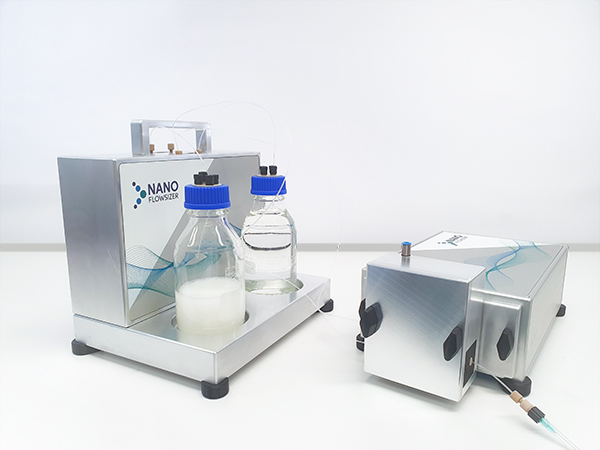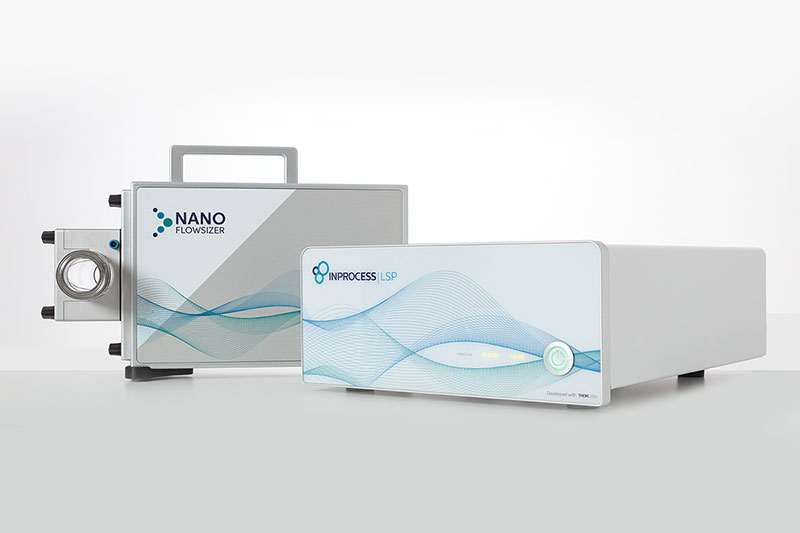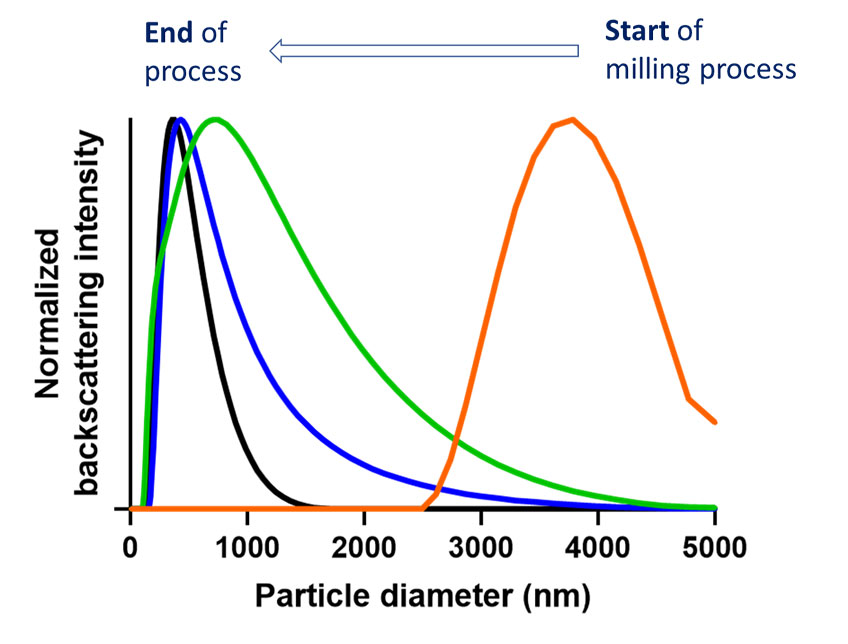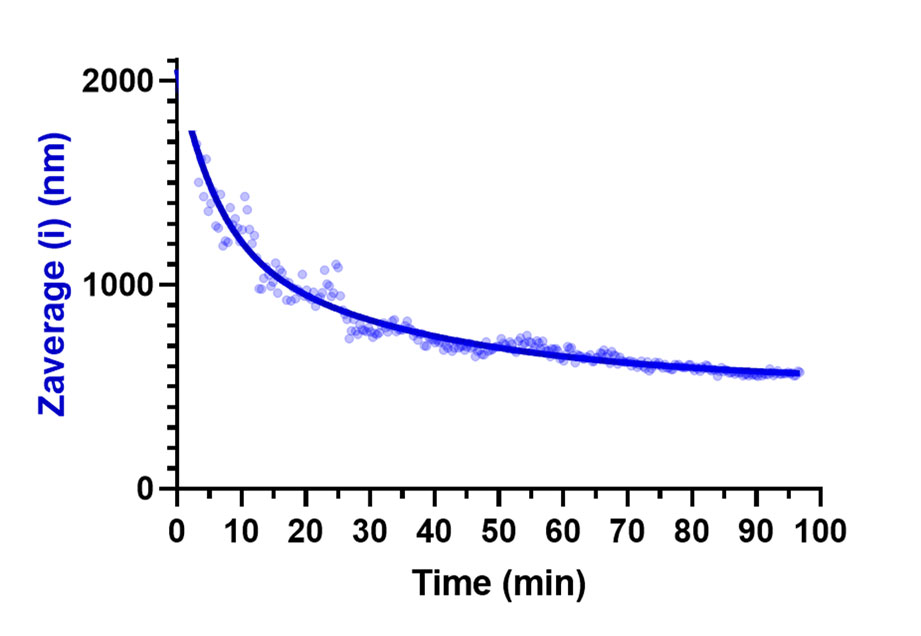NEW:
Online Micro Dilution module (OMD)
InProcess-LSP has developed and released a unique solution for handling very highly concentrated nanosuspensions: the Online Micro Dilution (OMD) module.
The NanoFlowSizer as such is capable of measuring particle size of highly turbid suspensions without any dilution.
Nevertheless, complex rheology and possible particle-particle interactions of very highly concentrated suspensions (>10% v/v particles) may invalidate the relation between particle diffusion rate and particle hydrodynamic size. As a result of these effects, inaccurate particle size information can be obtained. The OMD module solves this issue by continuous extraction, dilution, and subsequent SR-DLS measurement of highly concentrated products during processing.

The solution for highly turbid suspensions
The OMD module is a highly advanced continuous extraction and dilution system that can monitor the dilution factor very precisely by integrated mass-flow sensors based on the Coriolis principle. To overcome potential errors stemming from increased solvent viscosity and/or particle-particle interactions due to high particle concentrations, a dilution factor between 40 and 80 can be used for the vast majority of formulations.
The dilution factor and overall flow rate can be managed conveniently through the XsperGo software of the NanoFlowSizer. The actual mass flow and the dilution factor are continuously monitored and controlled by the system. And the system can even be set to be automatically corrected upon changes in the process through a dedicated algorithm.
The Online Micro Dilution
Features and benefits
- For analyzing extremely concentrated samples
- Suitable for all process scales
- Fully automated process control
- Automated dilution
- Very efficient: near zero product waste
- Easily integrated into any existing production line
- Continuous output of important size parameters such as PDI, D90
- The Solution for wet bead nanomilling monitoring


The OMD module configuration
The OMD module extracts between 10 to 150 µl/min online from the process and dilutes the sample with a suitable diluent.
A typical extraction rate is 50 µl/min, which can be diluted 50× with a diluent.
For one hour of continuous measurements, this will result in only 3 mL waste of product and usage of 150 ml of diluent. After extraction of the sample from the process, the material is diluted and mixed via a static mixer, prior to measurement in the flow cell (vii in the scheme)
At typical flow rates of the diluent, the delay between sampling and measurement is in the range of 1-2 minutes.
The OMD module as The Solution for wet bead milling
One of the nanoparticle processing areas for which the OMD module is a highly effective solution for real-time particle size monitoring is wet bead milling. In a wet bead nanomilling process large particles are milled down to the nanoscale range. High solid fractions up to 40-50% are not uncommon but make it difficult or even impossible to monitor particle size formation in real time without manual sampling and dilution. The NanoFlowSizer, equipped with the OMD module will provide continuous particle size distribution information in real time during the milling process.

At the start of the wet bead milling process larger particle size and distribution (PSD) are observed. At the end of the process particle size and PSD are smaller and have reached their endpoint specification.

Particle size decreases during the wet bead milling process. The individual measurement points represent z-average particle size measurements by the NanoFlowSizer using the OMD module.
Continuous output of important size parameters such as PDI, D90 (intensity or volume distributed) can be collected every few seconds. The OMD module is particularly useful in determining what happens in the late stages of milling, and can accurately measure the exact point at which the milled suspension has reached your specified particle size criteria. Such end-of-milling determinations can help in reducing complexity of nanomilling unit operations, and can even open the opportunity for real-time release of milled products.